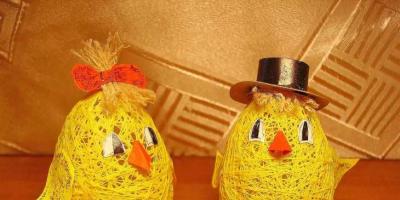In the 11th century, the Greek Empire was going through difficult times. The Turks devastated her possessions in Asia Minor, ravaged cities and villages, killing their inhabitants, and accompanied their cruelties by insulting holy temples, relics, icons and books. Muslims attempted to destroy the relics of St. Nicholas, deeply revered by the entire Christian world.
In 792, Caliph Aaron Al-Rashid sent the commander of the fleet, Humaid, to plunder the island of Rhodes. Having devastated this island, Humaid went to Myra Lycia with the intention of breaking into the tomb of St. Nicholas. But instead of it, he broke into another one, which stood next to the tomb of the Saint. The sacrilege had barely managed to do this when a terrible storm arose at sea and almost all the ships were broken.
The desecration of shrines outraged not only Eastern, but also Western Christians. Christians in Italy, among whom there were many Greeks, were especially afraid for the relics of St. Nicholas. Residents of the city of Bar, located on the shores of the Adriatic Sea, decided to save the relics of St. Nicholas.
In 1087, noble and Venetian merchants went to Antioch to trade. Both of them planned to take the relics of St. Nicholas on the way back and transport them to Italy. In this intention, the inhabitants of Bar were ahead of the Venetians and were the first to land in Myra. Two people were sent ahead, who, upon returning, reported that everything was quiet in the city, and in the church where the greatest shrine rested, they met only four monks. Immediately 47 people, armed, went to the temple of St. Nicholas, the guard monks, not suspecting anything, showed them the platform, under which the tomb of the saint was hidden, where, according to custom, strangers were anointed with myrrh from the relics of the saint. At the same time, the monk told one elder about the appearance of St. Nicholas the day before. In this vision, the Saint ordered that his relics be preserved more carefully. This story inspired the nobles; They saw for themselves in this phenomenon the permission and, as it were, an indication of the Holy One. To facilitate their actions, they revealed their intentions to the monks and offered them a ransom of 300 gold coins. The watchmen refused the money and wanted to notify the residents of the misfortune that threatened them. But the aliens tied them up and placed their guards at the doors. They smashed the church platform, under which stood a tomb with relics. In this matter, the young man Matthew was particularly zealous, wanting to discover the relics of the Saint as quickly as possible. In impatience, he broke the lid and the nobles saw that the sarcophagus was filled with fragrant holy myrrh. The barians' compatriots, presbyters Luppus and Drogo, performed a litany, after which the same Matthew began to extract the relics of the Saint from the sarcophagus overflowing with the world. This happened on April 20, 1087.
Due to the absence of the ark, Presbyter Drogo wrapped the relics in outer clothing and, accompanied by the nobles, carried them to the ship. The liberated monks told the city the sad news about the theft of the relics of the Wonderworker by foreigners. Crowds of people gathered on the shore, but it was too late...
On May 8, the ships arrived in Bar, and soon the good news spread throughout the city. The next day, May 9, the relics of St. Nicholas were solemnly transferred to the Church of St. Stephen, located not far from the sea. The celebration of the transfer of the shrine was accompanied by numerous miraculous healings of the sick, which aroused even greater reverence for the great saint of God. A year later, a church was built in the name of St. Nicholas and consecrated by Pope Urban II.
The event associated with the transfer of the relics of St. Nicholas aroused special veneration of the Wonderworker and was marked by the establishment of a special holiday on May 9. At first, the feast of the transfer of the relics of St. Nicholas was celebrated only by residents of the Italian city of Bar. In other countries of the Christian East and West it was not accepted, despite the fact that the transfer of relics was widely known. This circumstance is explained by the custom of honoring mainly local shrines, characteristic of the Middle Ages. In addition, the Greek Church did not establish a celebration of this memory, because the loss of the relics of the Saint was a sad event for it.
The Russian Orthodox Church established the commemoration of the transfer of the relics of St. Nicholas from Myra in Lycia to Bar on May 9, shortly after 1087, on the basis of the deep, already established veneration by the Russian people of the great saint of God, who crossed over from Greece simultaneously with the adoption of Christianity. The glory of the miracles performed by the Saint on land and at sea was widely known to the Russian people. Their inexhaustible power and abundance testify to the special gracious help of the great saint to suffering humanity. The image of the Saint, the all-powerful Wonderworker and benefactor, became especially dear to the heart of the Russian people, because he instilled deep faith in him and hope for his help. Countless miracles marked the faith of the Russian people in the inexhaustible help of the Pleasant of God.
In Russian writing, significant literature about him was compiled very early. Tales of the miracles of the Saint performed on Russian soil began to be written down in ancient times. Soon after the transfer of the relics of St. Nicholas from Myra in Lycia to Bargrad, a Russian edition of the life and the story of the transfer of his holy relics, written by a contemporary of this event, appeared. Even earlier, a word of praise to the Wonderworker was written. Every week, every Thursday, the Russian Orthodox Church especially honors his memory.
Numerous churches and monasteries were erected in honor of St. Nicholas, and Russian people named their children after him at Baptism. Numerous miraculous icons of the great Saint have been preserved in Russia. The most famous among them are the images of Mozhaisk, Zaraisk, Volokolamsk, Ugreshsky, Ratny. There is not a single house and not a single temple in the Russian Church in which there would not be an image of St. Nicholas the Wonderworker. The meaning of the gracious intercession of the great saint of God is expressed by the ancient compiler of the life, according to whom St. Nicholas “worked many great and glorious miracles on earth and on the sea, helping those in trouble and saving them from drowning, and from the depths of the sea to wear dry, delighting them from corruption and bringing into the house, delivering from bonds and prisons, interceding from the sword beating and freeing from death, giving much healing to many: sight to the blind, walking to the lame, hearing to the deaf, speaking to the dumb. "A ready helper in every need, a warm intercessor and a quick intercessor and defender, he appears, and he helps those who call upon him in the same way and delivers them from troubles. The message of this great Wonderworker is that the East and West and all the ends of the earth know his miracles."
This holiday is a table holiday for the Konstantin-Eleninsky convent, one of the churches of which is dedicated to St. Nicholas.
The abbess of the monastery, Abbess Hilarion (Feoktistova) and her sisters went to Bari to honor the memory of the great saint and for a prayer service at the resting place of his holy relics.
Troparion of St. Nicholas, tone 4:The day of a bright celebration has arrived, / the city of Barsky rejoices, / and with it the entire universe rejoices / with songs and spiritual songs: / today is a sacred celebration / in the presentation of the honorable and multi-healing relics / of St. Nicholas the Wonderworker, / like the unsetting sun, rising with radiant rays, / dispelling the darkness of temptations and troubles / from those who cry out truly // save us, as our representative, the great Nicholas.
 In the Konstantino-Eleninsky convent, one of the churches is dedicated to St. Nicholas, a piece of his holy relics and a wonderful icon with his image are also kept there, and the walls are decorated with paintings that tell about the deeds of St. Nicholas. A small, cozy and, as they say, prayerful temple.
In the Konstantino-Eleninsky convent, one of the churches is dedicated to St. Nicholas, a piece of his holy relics and a wonderful icon with his image are also kept there, and the walls are decorated with paintings that tell about the deeds of St. Nicholas. A small, cozy and, as they say, prayerful temple.
The Legend of the Transfer of the Relics of St. Nicholas, Archbishop of Myra
(Expounded on the Lives of Saints by St. Demetrius of Rostov)
 In the summer of 1087, under the Greek king Alexy Komnenos and under the Patriarch of Constantinople Nicholas Grammar, during the reign of Vsevolod Yaroslavich in Rus' in Kiev and his son Vladimir Vsevolodovich Monomakh in Chernigov, the Ishmaelites invaded the Greek region, both from both sides of the sea . They went through all the cities and villages, ... cut off men, took women and children captive and burned houses and property. Churches and monasteries were deserted. Then the Myra of Lycia were devastated, in which the body of St. Nicholas rested, a precious and all-honorable body that worked wondrous and glorious miracles... But our Lord Jesus Christ could not allow the relics of the saint to rest in a desolate place and not be glorified by anyone , according to what is said in Scripture: “let the saints triumph in glory” (Ps. 149:5); and again: “Glory will be to all His saints” (Ps. 149:9).
In the summer of 1087, under the Greek king Alexy Komnenos and under the Patriarch of Constantinople Nicholas Grammar, during the reign of Vsevolod Yaroslavich in Rus' in Kiev and his son Vladimir Vsevolodovich Monomakh in Chernigov, the Ishmaelites invaded the Greek region, both from both sides of the sea . They went through all the cities and villages, ... cut off men, took women and children captive and burned houses and property. Churches and monasteries were deserted. Then the Myra of Lycia were devastated, in which the body of St. Nicholas rested, a precious and all-honorable body that worked wondrous and glorious miracles... But our Lord Jesus Christ could not allow the relics of the saint to rest in a desolate place and not be glorified by anyone , according to what is said in Scripture: “let the saints triumph in glory” (Ps. 149:5); and again: “Glory will be to all His saints” (Ps. 149:9).
In the city of Bari, which then belonged to the Normans, there lived a certain presbyter, Christ-loving and righteous. Saint Nicholas appeared to him in a dream and said: “Go and tell the citizens and the entire church council to go to the city of Myra, take me from there and put me here, for I cannot stay there in a desolate place. This is the will of the Lord."
Having said this, the saint became invisible. Waking up in the morning, the presbyter told everyone his former vision. They rejoiced and said: “Now the Lord has magnified His mercy on His people and on our city, for He has vouchsafed us to receive His saint, Saint Nicholas.”
They immediately chose reverent and God-fearing men from among them and sent them in three ships to retrieve the relics of the saint.
Having sailed to Antioch, ...they learned that the Venetians who were there wanted to warn them and take the relics of St. Nicholas. Immediately the nobles set off in haste, arrived at Myra in Lycia and landed at the city pier.
Having conceived a matter to save themselves and their city, they armed themselves and entered the church of St. Nicholas. Here they saw four monks and asked them where the relics of St. Nicholas rested. They showed them the place of the shrine. The nobles dug up the church platform and found a shrine full of peace. They poured myrrh into a vessel, and took the relics of the saint and carried them to the ship, then sailed away. Two monks remained in Myra, and two accompanied the relics of St. Nicholas. They departed from the city of Mir in the month of April on the 11th day, and arrived in the city of Bari in the month of May on the 9th day, on Sunday evening.
 Seeing that they had arrived from the city of Mir with the relics of St. Nicholas, all the inhabitants of the city of Bari, men and wives, from young to old, came out to meet the saint with candles and incense, received the relics with joy and great honor and placed them in the Church of St. John the Baptist at seas.
Seeing that they had arrived from the city of Mir with the relics of St. Nicholas, all the inhabitants of the city of Bari, men and wives, from young to old, came out to meet the saint with candles and incense, received the relics with joy and great honor and placed them in the Church of St. John the Baptist at seas.
The relics of the saint performed many miracles here. And they brought many gifts to the saint. Seeing his glorious miracles, the citizens were filled with great joy, created a great and beautiful church in the name of St. Nicholas the Wonderworker, and forged a gilded silver shrine for his relics. In the third summer after the transfer of the relics from Myra Lycia, at the request of the inhabitants of Bari, Pope Urban arrived in the city with his bishops and the entire church clergy to transfer the relics of St. Nicholas. They placed the relics of the saint in a silver shrine, then the bishops and nobles transferred it to the new church and placed it in the altar, on the 9th day of May. They also moved the saint’s dilapidated coffin, in which he had been brought from Mir, placed the coffin in the church and placed in it part of the hand from the saint’s relics. Many people came and worshiped the saint, kissing his relics and the shrine. Pope Urban, the bishops and all the citizens created a great holiday and glorification of the saint on that day, which they continue to do to this day.
Balkans. Serbia. Bake; XIV century; location: Serbia. Kosovo. Patriarchal stove. Church of St. Nicholas. Altar
On May 22 (9), the Russian Orthodox Church celebrates the Day of the Transfer of the Honorable Relics of St. Nicholas the Wonderworker from Myra in Lycia to Bari. This event took place in 1087.
The Lord allowed His great Saint to live to a ripe old age. But the time came when he, too, had to repay the common debt of human nature. After a short illness, he died peacefully on December 6, 342, and was buried in the cathedral church of the city of Myra.
During his lifetime, Saint Nicholas was a benefactor of the human race; He did not cease to be one even after his death. The Lord granted his honest body incorruptibility and special miraculous power. His relics began - and continue to this day - to exude fragrant myrrh, which has the gift of working miracles.
More than seven hundred years have passed since the death of the Pleasant of God. The city of Myra and the entire Lycian country were destroyed by the Saracens. The ruins of the temple with the tomb of the saint were in disrepair and were guarded only by a few pious monks.
In 1087, Saint Nicholas appeared in a dream to an Apulian priest of the city of Bari (in southern Italy) and ordered his relics to be transferred to this city.
The presbyters and noble townspeople equipped three ships for this purpose and, under the guise of traders, set off. This precaution was necessary in order to lull the vigilance of the Venetians, who, having learned about the preparations of the inhabitants of Bari, had the intention of getting ahead of them and bringing the relics of the Saint to their city.
The nobles, taking a roundabout route through Egypt and Palestine, visiting ports and conducting trade as simple merchants, finally arrived in the Lycian land. The scouts sent reported that there were no guards at the tomb and it was guarded only by four old monks. The barians came to Myra, where, not knowing the exact location of the tomb, they tried to bribe the monks by offering them three hundred gold coins, but due to their refusal, they used force: they tied up the monks and, under the threat of torture, forced one faint-hearted person to show them the location of the tomb.
A wonderfully preserved white marble tomb has been opened. It turned out to be filled to the brim with fragrant myrrh, in which the relics of the saint were immersed. Unable to take the large and heavy tomb, the nobles transferred the relics into the prepared ark and set off on their way back.
The journey lasted twenty days, and on May 9/22, 1087 they arrived in Bari. A solemn meeting was arranged for the great shrine with the participation of numerous clergy and the entire population. Initially, the relics of the saint were placed in the church of St. Eustathius.
Many miracles happened from them. Two years later, the lower part (crypts) of the new temple was completed and consecrated in the name of St. Nicholas, built deliberately to store his relics, where they were solemnly transferred by Pope Urban II on October 1, 1089.
The upper part of the temple (basilica) was built much later - June 22/August 5, 1197.
The service to the saint, performed on the day of the transfer of his relics from Myra Lycia to Bargrad - May 9/22 - was compiled in 1097 by the Russian Orthodox monk of the Pechersk monastery Gregory and the Russian metropolitan Ephraim.
The Holy Orthodox Church honors the memory of St. Nicholas not only on December 6/19 and May 9/22, but also weekly, every Thursday, with special hymns.
Holiday chants:
Troparion, tone 4
The day of the bright triumph has arrived, the city of Barsky rejoices, and with it the entire universe rejoices with songs and spiritual stumps: today is a sacred triumph, in the presentation of the honest and multi-healing relics of the Holy Hierarch and Wonderworker Nicholas, like the unsetting sun, rising with radiant rays, dispelling the darkness of temptations and troubles from those crying out truly: save us, as our intercessor, great Nicholas.
Kontakion, tone 3
Rise up, like a star, from east to west your relics, to Saint Nicholas, the sea was sanctified by your procession, and the city of Barsky received your grace: you appeared to share us, graceful, wonderful and merciful miracle worker.
Saint Nicholas, Archbishop of Myra of Lycia, wonderworker(transfer of relics from Myra Lycia to Bari). Information about his life is included.
In the 11th century, the Greek Empire was going through difficult times. The Turks devastated her possessions in Asia Minor, ravaged cities and villages, killing their inhabitants, and accompanied their cruelties by insulting holy temples, relics, icons and books. Muslims attempted to destroy the relics of St. Nicholas, deeply revered by the entire Christian world.
In 792, Caliph Aaron Al-Rashid sent the commander of the fleet, Humaid, to plunder the island of Rhodes. Having devastated this island, Humaid went to Myra Lycia with the intention of breaking into the tomb of St. Nicholas. But instead of it, he broke into another one, which stood next to the tomb of the Saint. The sacrilege had barely managed to do this when a terrible storm arose at sea and almost all the ships were broken.
The desecration of shrines outraged not only Eastern, but also Western Christians. Christians in Italy, among whom there were many Greeks, were especially afraid for the relics of St. Nicholas. Residents of the city of Bari, located on the shores of the Adriatic Sea, decided to save the relics of St. Nicholas.
In 1087, noble and Venetian merchants went to Antioch to trade. Both of them planned to take the relics of St. Nicholas on the way back and transport them to Italy. In this intention, the inhabitants of Bari were ahead of the Venetians and were the first to land at Myra. Two people were sent ahead, who, upon returning, reported that everything was quiet in the city, and in the church where the greatest shrine rested, they met only four monks. Immediately 47 people, armed, went to the temple of St. Nicholas, the guard monks, not suspecting anything, showed them the platform, under which the tomb of the saint was hidden, where, according to custom, strangers were anointed with myrrh from the relics of the saint. At the same time, the monk told one elder about the appearance of St. Nicholas the day before. In this vision, the Saint ordered that his relics be preserved more carefully. This story inspired the nobles; They saw for themselves in this phenomenon the permission and, as it were, an indication of the Holy One. To facilitate their actions, they revealed their intentions to the monks and offered them a ransom of 300 gold coins. The watchmen refused the money and wanted to notify the residents of the misfortune that threatened them. But the aliens tied them up and placed their guards at the doors. They smashed the church platform, under which stood a tomb with relics. In this matter, the young man Matthew was particularly zealous, wanting to discover the relics of the Saint as quickly as possible. In impatience, he broke the lid and the nobles saw that the sarcophagus was filled with fragrant holy myrrh. The barians' compatriots, presbyters Luppus and Drogo, performed a litany, after which the same Matthew began to extract the relics of the Saint from the sarcophagus overflowing with the world. This happened on April 20, 1087.
Due to the absence of the ark, Presbyter Drogo wrapped the relics in outer clothing and, accompanied by the nobles, carried them to the ship. The liberated monks told the city the sad news about the theft of the relics of the Wonderworker by foreigners. Crowds of people gathered on the shore, but it was too late...
On May 8, the ships arrived in Bari, and soon the good news spread throughout the city. The next day, May 9, the relics of St. Nicholas were solemnly transferred to the Church of St. Stephen, located not far from the sea. The celebration of the transfer of the shrine was accompanied by numerous miraculous healings of the sick, which aroused even greater reverence for the great saint of God. A year later, a church was built in the name of St. Nicholas and consecrated by Pope Urban II.
The event associated with the transfer of the relics of St. Nicholas aroused special veneration of the Wonderworker and was marked by the establishment of a special holiday on May 9. At first, the feast of the transfer of the relics of St. Nicholas was celebrated only by residents of the Italian city of Bari. In other countries of the Christian East and West it was not accepted, despite the fact that the transfer of relics was widely known. This circumstance is explained by the custom of honoring mainly local shrines, characteristic of the Middle Ages. In addition, the Greek Church did not establish a celebration of this memory, because the loss of the relics of the Saint was a sad event for it.
The Russian Orthodox Church established the commemoration of the transfer of the relics of St. Nicholas from Myra in Lycia to Bari on May 9 shortly after 1087 on the basis of the deep, already established veneration by the Russian people of the great saint of God, who crossed over from Greece simultaneously with the adoption of Christianity. The glory of the miracles performed by the Saint on land and at sea was widely known to the Russian people. Their inexhaustible power and abundance testify to the special gracious help of the great saint to suffering humanity. The image of the Saint, the all-powerful Wonderworker and benefactor, became especially dear to the heart of the Russian people, because he instilled deep faith in him and hope for his help. Countless miracles marked the faith of the Russian people in the inexhaustible help of the Pleasant of God. In Russian writing, significant literature about him was compiled very early. Tales of the miracles of the Saint performed on Russian soil began to be written down in ancient times. Soon after the transfer of the relics of St. Nicholas from Myra in Lycia to Bari Grad, a Russian edition of the life and the story of the transfer of his holy relics, written by a contemporary of this event, appeared. Even earlier, a word of praise to the Wonderworker was written. Every week, every Thursday, the Russian Orthodox Church especially honors his memory.
Numerous churches and monasteries were erected in honor of St. Nicholas, and Russian people named their children after him at Baptism. Numerous miraculous icons of the great Saint have been preserved in Russia. The most famous among them are the images of Mozhaisk, Zaraisk, Volokolamsk, Ugreshsky, Ratny. There is not a single house and not a single temple in the Russian Church in which there would not be an image of St. Nicholas the Wonderworker. The meaning of the gracious intercession of the great saint of God is expressed by the ancient compiler of the life, according to whom St. Nicholas “worked many great and glorious miracles on earth and on the sea, helping those in trouble and saving them from drowning, and from the depths of the sea to wear dry, delighting them from corruption and bringing into the house, delivering from bonds and prisons, interceding from the sword beating and freeing from death, giving much healing to many: sight to the blind, walking to the lame, hearing to the deaf, speaking to the dumb. He enriched many in the squalor and poverty of those who suffered, gave food to the hungry, and showed himself to be a ready helper for every need, a warm intercessor and a quick intercessor and defender, and he helped those who called upon him and delivered him from troubles. The East and West know the news of this great Wonderworker, and all the ends of the earth know his miracles.”
Rise up like a star, from east to west/ your relics, St. Nicholas,/
the sea was sanctified by your procession, / and the city of Barsky received grace from you: /
Thou art the graceful, marvelous and merciful wonderworker who appeared in our company.
Kontakion to Saint Nicholas, tone 3
Icon of the St. Nicholas chapel of the Assumption Cathedral
Trinity-Sergius Lavra
In the 11th century, the Greek Empire was going through difficult times. The Turks devastated her possessions in Asia Minor, ravaged cities and villages, killing their inhabitants, and accompanied their cruelties by insulting holy temples, relics, icons and books. Muslims attempted to destroy the relics of St. Nicholas, deeply revered by the entire Christian world.
In 792, Caliph Aaron Al-Rashid sent the commander of the fleet, Humaid, to plunder the island of Rhodes. Having devastated this island, Humaid went to Myra Lycia with the intention of breaking into the tomb of St. Nicholas. But instead of it, he broke into another one, which stood next to the tomb of the Saint. The sacrilege had barely managed to do this when a terrible storm arose at sea and almost all the ships were broken.
The desecration of shrines outraged not only Eastern, but also Western Christians. Christians in Italy, among whom there were many Greeks, were especially afraid for the relics of St. Nicholas. Residents of the city of Bar, located on the shores of the Adriatic Sea, decided to save the relics of St. Nicholas.

Saint Nicholas with selected saints.
Contribution of Tsar Feodor Ivanovich and his wife Irina Feodorovna Godunova.
Around 1592. Trinity-Sergius Monastery
In 1087, noble and Venetian merchants went to Antioch to trade. Both of them planned to take the relics of St. Nicholas on the way back and transport them to Italy. In this intention, the inhabitants of Bar were ahead of the Venetians and were the first to land in Myra. Two people were sent ahead, who, upon returning, reported that everything was quiet in the city, and in the church where the greatest shrine rested, they met only four monks. Immediately 47 people, armed, went to the temple of St. Nicholas, the guard monks, not suspecting anything, showed them the platform, under which the tomb of the saint was hidden, where, according to custom, strangers were anointed with myrrh from the relics of the saint. At the same time, the monk told one elder about the appearance of St. Nicholas the day before. In this vision, the Saint ordered that his relics be preserved more carefully. This story inspired the nobles; They saw for themselves in this phenomenon the permission and, as it were, an indication of the Holy One. To facilitate their actions, they revealed their intentions to the monks and offered them a ransom of 300 gold coins. The watchmen refused the money and wanted to notify the residents of the misfortune that threatened them. But the aliens tied them up and placed their guards at the doors. They smashed the church platform, under which stood a tomb with relics. In this matter, the young man Matthew was particularly zealous, wanting to discover the relics of the Saint as quickly as possible. In impatience, he broke the lid and the nobles saw that the sarcophagus was filled with fragrant holy myrrh. The barians' compatriots, presbyters Luppus and Drogo, performed a litany, after which the same Matthew began to extract the relics of the Saint from the sarcophagus overflowing with the world. This happened on April 20, 1087.
Due to the absence of the ark, Presbyter Drogo wrapped the relics in outer clothing and, accompanied by the nobles, carried them to the ship. The liberated monks told the city the sad news about the theft of the relics of the Wonderworker by foreigners. Crowds of people gathered on the shore, but it was too late...
On May 8, the ships arrived in Bar, and soon the good news spread throughout the city. The next day, May 9, the relics of St. Nicholas were solemnly transferred to the Church of St. Stephen, located not far from the sea. The celebration of the transfer of the shrine was accompanied by numerous miraculous healings of the sick, which aroused even greater reverence for the great saint of God. A year later, a church was built in the name of St. Nicholas and consecrated by Pope Urban II.

Saint Nicholas, Archbishop of Myra in Lycia.
Icon from the sacristy of the Trinity-Srgius Lavra
The event associated with the transfer of the relics of St. Nicholas aroused special veneration of the Wonderworker and was marked by the establishment of a special holiday on May 9. At first, the feast of the transfer of the relics of St. Nicholas was celebrated only by residents of the Italian city of Bar. In other countries of the Christian East and West it was not accepted, despite the fact that the transfer of relics was widely known. This circumstance is explained by the custom of honoring mainly local shrines, characteristic of the Middle Ages. In addition, the Greek Church did not establish a celebration of this memory, because the loss of the relics of the Saint was a sad event for it.
The Russian Orthodox Church established the commemoration of the transfer of the relics of St. Nicholas from Myra in Lycia to Bar on May 9, shortly after 1087, on the basis of the deep, already established veneration by the Russian people of the great saint of God, who crossed over from Greece simultaneously with the adoption of Christianity. The glory of the miracles performed by the Saint on land and at sea was widely known to the Russian people. Their inexhaustible power and abundance testify to the special gracious help of the great saint to suffering humanity. The image of the Saint, the all-powerful Wonderworker and benefactor, became especially dear to the heart of the Russian people, because he instilled deep faith in him and hope for his help. Countless miracles marked the faith of the Russian people in the inexhaustible help of the Pleasant of God. In Russian writing, significant literature about him was compiled very early. Tales of the miracles of the Saint performed on Russian soil began to be written down in ancient times. Soon after the transfer of the relics of St. Nicholas from Myra in Lycia to Bargrad, a Russian edition of the life and the story of the transfer of his holy relics, written by a contemporary of this event, appeared. Even earlier, a word of praise to the Wonderworker was written. Every week, every Thursday, the Russian Orthodox Church especially honors his memory.
Numerous churches and monasteries were erected in honor of St. Nicholas, and Russian people named their children after him at Baptism. Numerous miraculous icons of the great Saint have been preserved in Russia. The most famous among them are the images of Mozhaisk, Zaraisk, Volokolamsk, Ugreshsky, Ratny. There is not a single house and not a single temple in the Russian Church in which there would not be an image of St. Nicholas the Wonderworker. The meaning of the gracious intercession of the great saint of God is expressed by the ancient compiler of the life, according to whom St. Nicholas “worked many great and glorious miracles on earth and on the sea, helping those in trouble and saving them from drowning, and from the depths of the sea to wear dry, delighting them from corruption and bringing into the house, delivering from bonds and prisons, interceding from the sword beating and freeing from death, giving much healing to many: sight to the blind, walking to the lame, hearing to the deaf, speaking to the dumb. He enriched many in the squalor and poverty of those who suffered, gave food to the hungry, and showed himself to be a ready helper for every need, a warm intercessor and a quick intercessor and defender, and he helped those who called upon him and delivered him from troubles. The East and West know the news of this great Wonderworker, and all the ends of the earth know his miracles.”

Saint Nicholas the Helper.
Icon from the Assumption Cathedral of the Trinity-Sergius Lavra.
Troparion to Saint Nicholas, Archbishop of Myra, Wonderworker, tone 4
P The day of bright triumph has arisen, / the city of Barsky rejoices, / and with it the entire universe rejoices / with songs and spiritual songs: / today is a sacred celebration / in the presentation of the honorable and multi-healing relics / of St. Nicholas the Wonderworker, / like the unsetting sun, rising with radiant rays, / dispelling the darkness of temptations and troubles / from those who cry out truly // save us, as our representative, the great Nicholas.
Kontakion to Saint Nicholas, Archbishop of Myra, Wonderworker, Tone 3
IN You are like a star, from the east to the west/ your relics, St. Nicholas,/ the sea was sanctified by your procession,/ and the city of Barsky receives your grace:/ dividing us, you appeared gracefully, // wonderful and merciful.
PRAYER TO ST. NICHOLAS
ABOUT all-praised and all-honorable to the bishop, the great wonderworker of Christ, Father Nicholas, the man of God, and faithful to the servant, the man of desires, the chosen vessel, a strong pillar of the church, a bright lamp, a shining star and illuminating the whole universe, you are a righteous man, like a flourishing phoenix planted in the courtyards Your Lord: living in Mireh, you smelled of the world, and you exuded the ever-flowing grace of God. By your procession, holy father, the sea was sanctified, when your many-wonderful relics marched to the city of Barsky, from east to west to praise the name of the Lord. Oh, most graceful and wonderful miracle worker, quick helper, warm intercessor, kind shepherd, saving the verbal flock from all troubles, we glorify and magnify you, as the hope of all Christians, the source of miracles, the protector of the faithful, the wise teacher, those who are hungry for the feeder, those who cry joy, the naked robe, a sick doctor, a steward floating on the sea, a liberator of captives, a nourisher and protector of widows and orphans, a guardian of chastity, a meek chastiser for infants, an old fortifier, a fasting mentor, a rest for the toiling, an abundance of wealth for the poor and wretched. Hear us praying to you and running under your roof, show your intercession for us to the Most High and intercede with your God-pleasing prayers all that is useful for the salvation of our souls and bodies: preserve this holy monastery (or: this temple), every city and all, and every the Christian country, and the people living, from all bitterness with your help: we know, we know how much the prayer of the righteous can do, hastening for good: for you, the righteous one according to the most blessed Virgin Mary, intercessor to the All-Merciful God of the imams, and to yours, most kind father, warm We humbly flow to intercession and intercession: guard us like a cheerful and good shepherd, from all enemies, destruction, cowardice, hail, famine, flood, fire, sword, invasion of foreigners, and in all our troubles and sorrows, give us a helping hand and open the doors God's mercy; We are still unworthy to behold the heights of heaven, because of the multitude of our iniquities: we are bound by sinful bonds, and neither have we created the will of our Creator, nor have we kept His commandments. By the same token, we bow our contrite and humble hearts to our Creator, and we ask for your fatherly intercession to him: help us, servant of God, so that we do not perish with our iniquities, deliver us from all evil and from all things that are resistant, guide our minds, and strengthen our heart in the right faith, in it, through your intercession and intercession, we will not be belittled by wounds, nor rebuke, nor pestilence, nor by any wrath from our Creator, but we will live a peaceful life here, and may we be honored to see good things on the lands of the living, glorifying Father and Son and Holy Spirit, One in the Trinity, glorified and worshiped God, now and ever, and unto ages of ages. Amen.May 22, 2019








